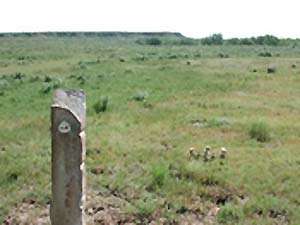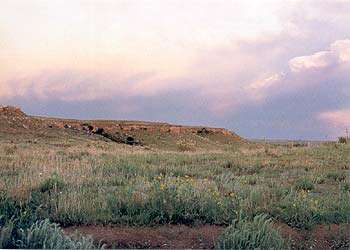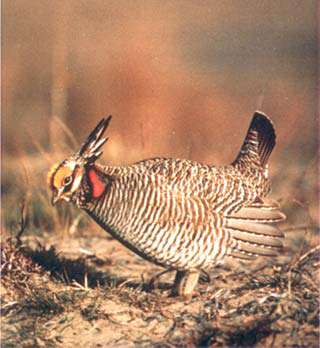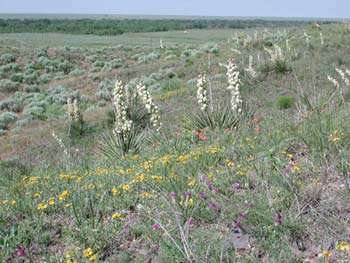Cimarron National Grassland, KS Attractions
Hugoton - 32 mi. NE
 The Cimarron offers many types of terrain that suits the activity level of most any hiker.
The Cimarron offers many types of terrain that suits the activity level of most any hiker. The Cimarron National Grassland Auto Tour is a self-guided, 50 mile tour which will take approximately 3 hours to complete. The tour includes 11 stops at unique places and features 6 points of interest. Stops include wildlife, a picnic area, oil production, sand dunes, a prairie dog town and scenic overlooks along the Cimarron River. A companion brochure, available at the District office, contains a map indicating the various stops on the tour, as well as numbered narrative segments which correspond to the stops. This scenic drive is a great way to see the Grassland by car. The roads are good gravel roads, and are accessible to sedans and most RVs, but caution is advised during wet weather as the roads become quite slippery with even small amounts of moisture.
The Cimarron National Grassland Auto Tour is a self-guided, 50 mile tour which will take approximately 3 hours to complete. The tour includes 11 stops at unique places and features 6 points of interest. Stops include wildlife, a picnic area, oil production, sand dunes, a prairie dog town and scenic overlooks along the Cimarron River. A companion brochure, available at the District office, contains a map indicating the various stops on the tour, as well as numbered narrative segments which correspond to the stops. This scenic drive is a great way to see the Grassland by car. The roads are good gravel roads, and are accessible to sedans and most RVs, but caution is advised during wet weather as the roads become quite slippery with even small amounts of moisture.  The Cimarron National Grassland stretches as far as the eye can see, and is available for public hunting. A major drawing card for hunters is that the Grassland is the largest parcel of public land in the state of Kansas. There are 108,175 acres open for hunting upland birds, small game, varmints, and large game. Hunters often come to the Grassland from all over the United States to hunt one particular species of game, see the diversity of wildlife here, and wind up coming back to hunt another species.
The Cimarron National Grassland stretches as far as the eye can see, and is available for public hunting. A major drawing card for hunters is that the Grassland is the largest parcel of public land in the state of Kansas. There are 108,175 acres open for hunting upland birds, small game, varmints, and large game. Hunters often come to the Grassland from all over the United States to hunt one particular species of game, see the diversity of wildlife here, and wind up coming back to hunt another species.The flat terrain of the Cimarron National Grassland makes it especially attractive to physically-challenged hunters. This topography, combined with the numerous oil- and gas-facility roads that provide easy access to virtually every part of the Grassland, make it ideal for use by disabled hunters.Pheasant - grassland adjacent to cultivated private lands.
Bobwhite Quail - fence rows, woody areas along the river.
Scaled Quail - abandoned farmsteads & farm machinery, windmill areas.
Lesser Prairie-Chicken - grassland adjacent to milo fields ( watch for them flying into/out of fields at dusk and dawn)
Dove - windmill areas.
Deer - primarily within the length of the Cimarron River Corridor, and amid the fields and pastures north of the river and west of State Highway 27.
Turkey - within the Cimarron River Corridor, primarily east of State Highway 27.
 For the majority of the year, the grassland\'s \"at glance\" vegetation consists of a large variety of short to mid-height prairie grasses and forbs, which are extremely interesting to the botanist. But during spring - provided there is sufficient moisture - the prairie comes alive with wildflowers.
For the majority of the year, the grassland\'s \"at glance\" vegetation consists of a large variety of short to mid-height prairie grasses and forbs, which are extremely interesting to the botanist. But during spring - provided there is sufficient moisture - the prairie comes alive with wildflowers.